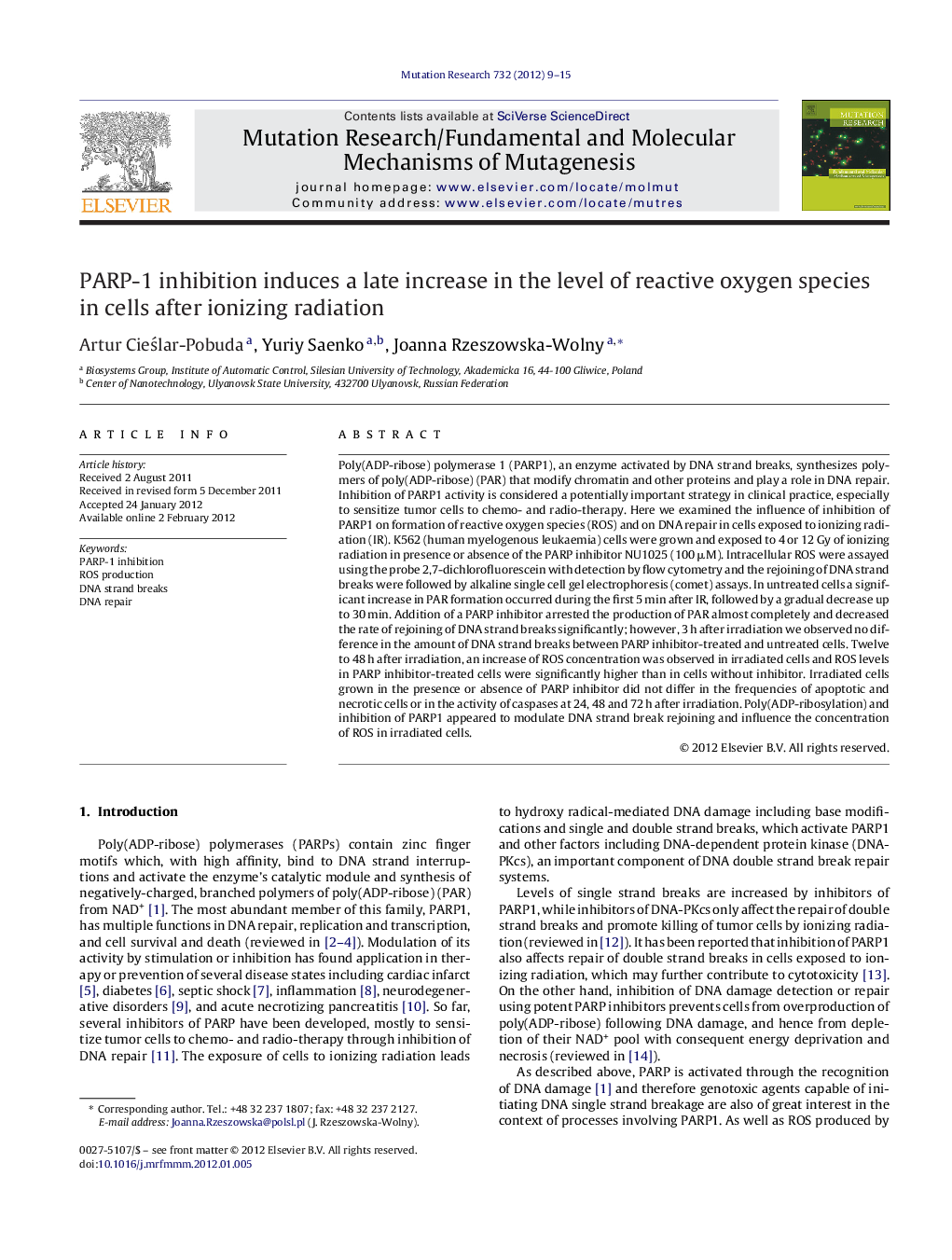| کد مقاله | کد نشریه | سال انتشار | مقاله انگلیسی | نسخه تمام متن |
|---|---|---|---|---|
| 2146489 | 1548353 | 2012 | 7 صفحه PDF | دانلود رایگان |

Poly(ADP-ribose) polymerase 1 (PARP1), an enzyme activated by DNA strand breaks, synthesizes polymers of poly(ADP-ribose) (PAR) that modify chromatin and other proteins and play a role in DNA repair. Inhibition of PARP1 activity is considered a potentially important strategy in clinical practice, especially to sensitize tumor cells to chemo- and radio-therapy. Here we examined the influence of inhibition of PARP1 on formation of reactive oxygen species (ROS) and on DNA repair in cells exposed to ionizing radiation (IR). K562 (human myelogenous leukaemia) cells were grown and exposed to 4 or 12 Gy of ionizing radiation in presence or absence of the PARP inhibitor NU1025 (100 μM). Intracellular ROS were assayed using the probe 2,7-dichlorofluorescein with detection by flow cytometry and the rejoining of DNA strand breaks were followed by alkaline single cell gel electrophoresis (comet) assays. In untreated cells a significant increase in PAR formation occurred during the first 5 min after IR, followed by a gradual decrease up to 30 min. Addition of a PARP inhibitor arrested the production of PAR almost completely and decreased the rate of rejoining of DNA strand breaks significantly; however, 3 h after irradiation we observed no difference in the amount of DNA strand breaks between PARP inhibitor-treated and untreated cells. Twelve to 48 h after irradiation, an increase of ROS concentration was observed in irradiated cells and ROS levels in PARP inhibitor-treated cells were significantly higher than in cells without inhibitor. Irradiated cells grown in the presence or absence of PARP inhibitor did not differ in the frequencies of apoptotic and necrotic cells or in the activity of caspases at 24, 48 and 72 h after irradiation. Poly(ADP-ribosylation) and inhibition of PARP1 appeared to modulate DNA strand break rejoining and influence the concentration of ROS in irradiated cells.
► Ionizing radiation induces DNA damage that activates poly(ADP-ribose) polymerase.
► Poly(ADP ribose) (PAR) is synthesized and decomposed a few minutes later.
► Inhibition of PAR synthesis correlates with increased ROS level a few hours later.
► Inhibitors of poly(ADP-ribose) polymerase are used in clinics as tumor sensitizers.
► Increase of ROS level may be an important factor in sensitization to tumor therapy.
Journal: Mutation Research/Fundamental and Molecular Mechanisms of Mutagenesis - Volume 732, Issues 1–2, 1 April 2012, Pages 9–15